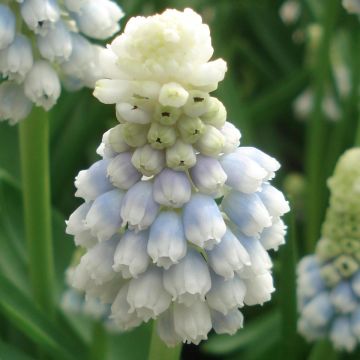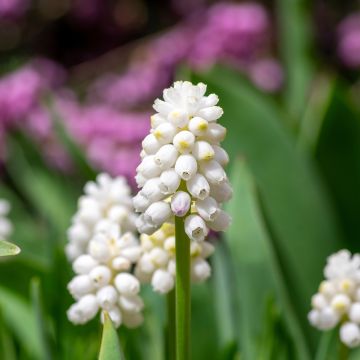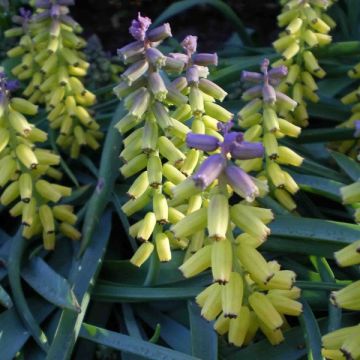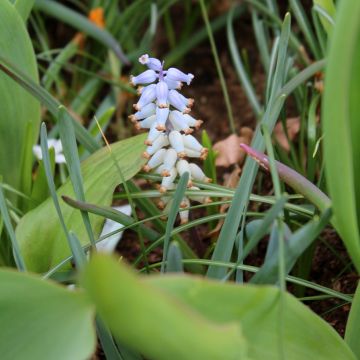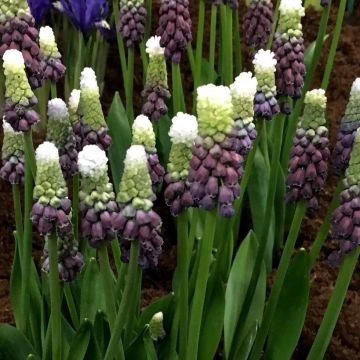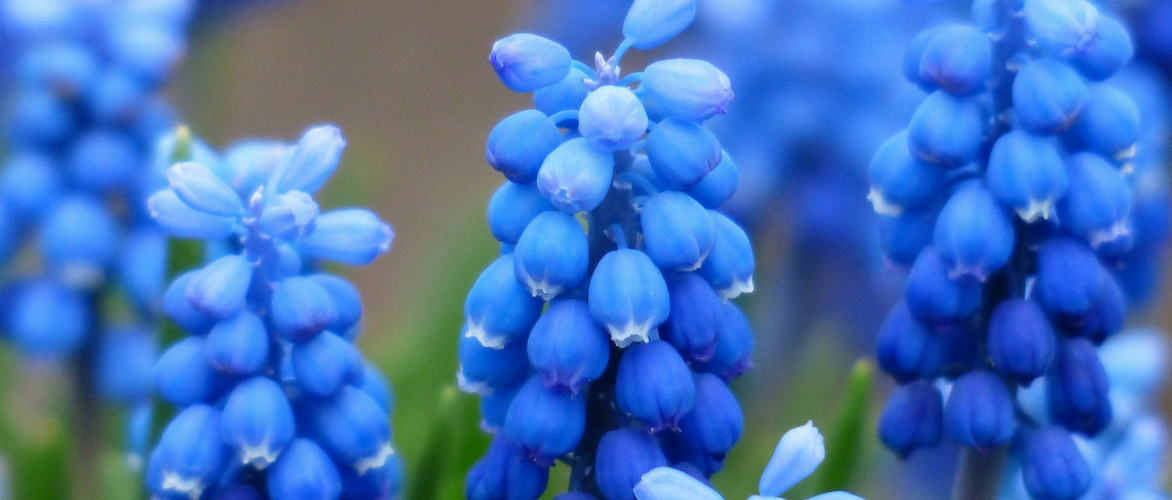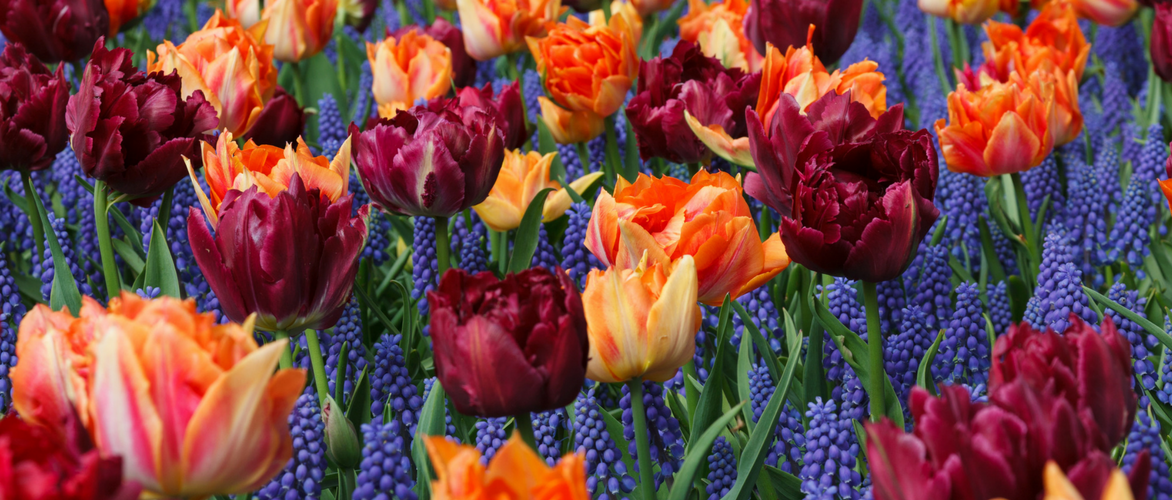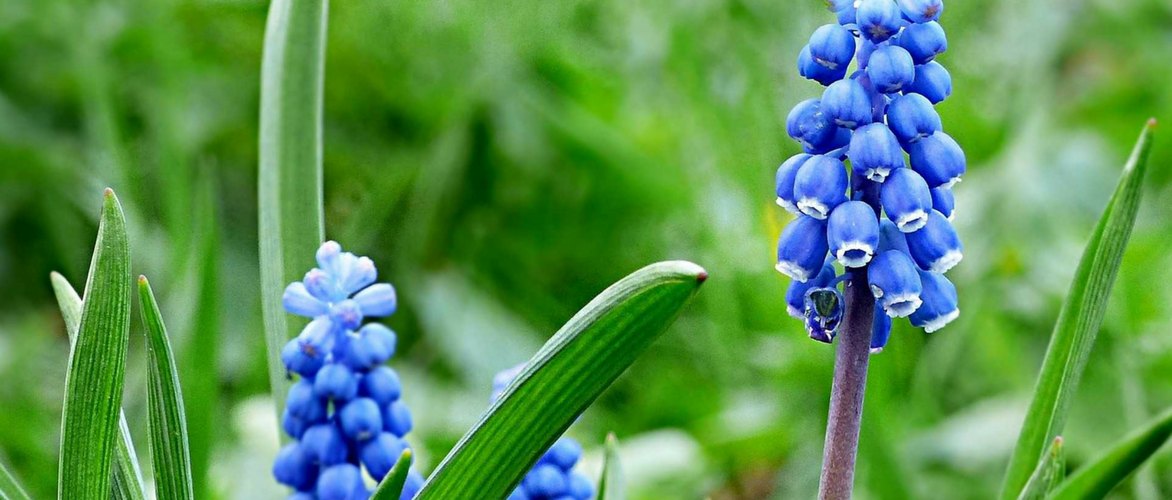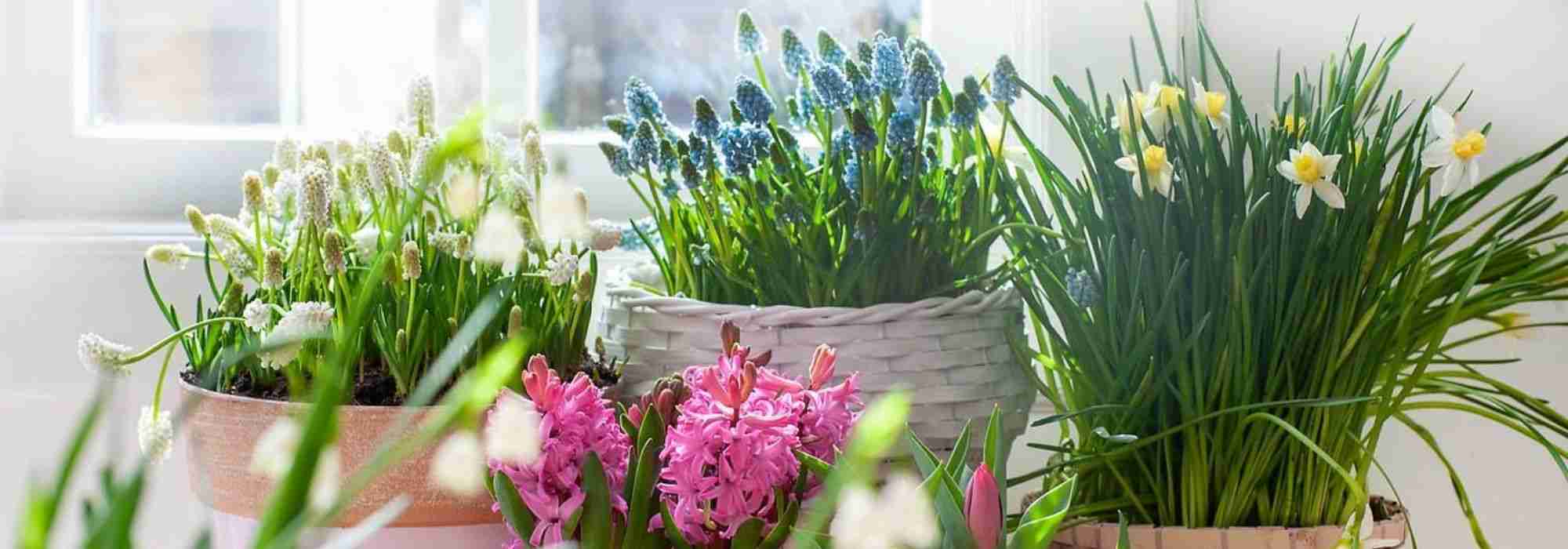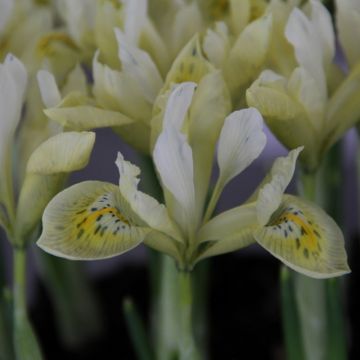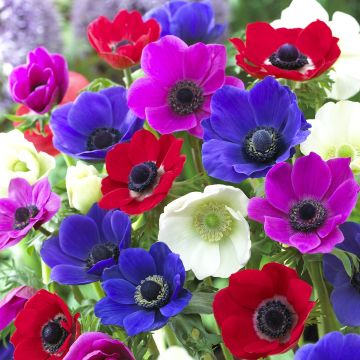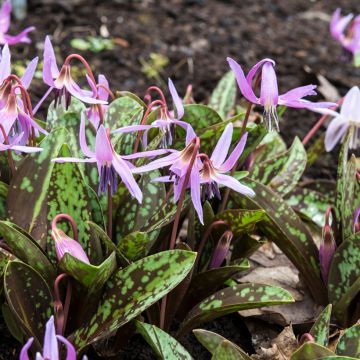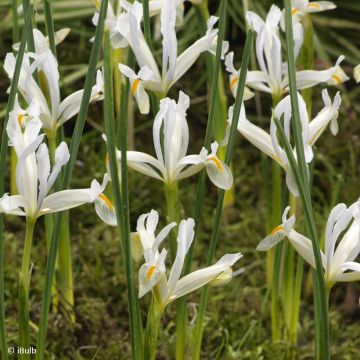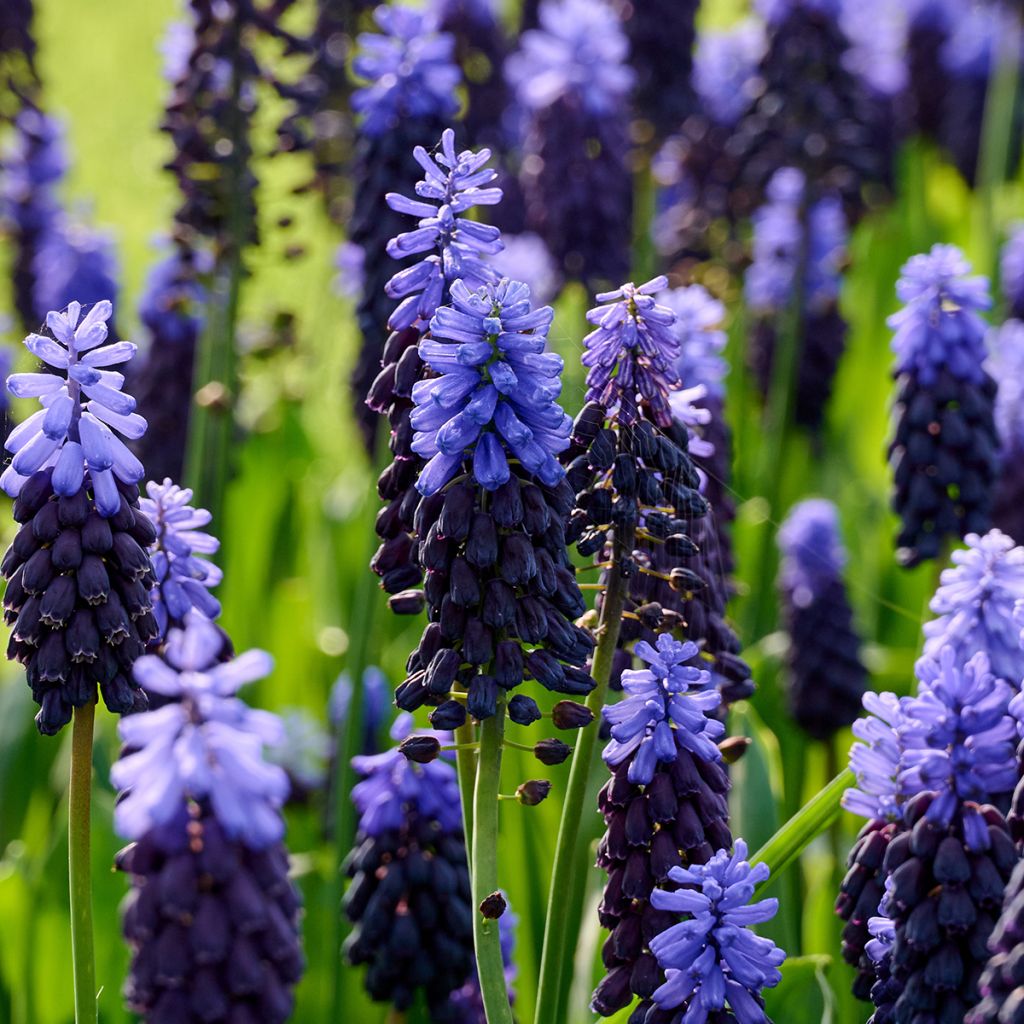

Muscari latifolium - Grape Hyacinth
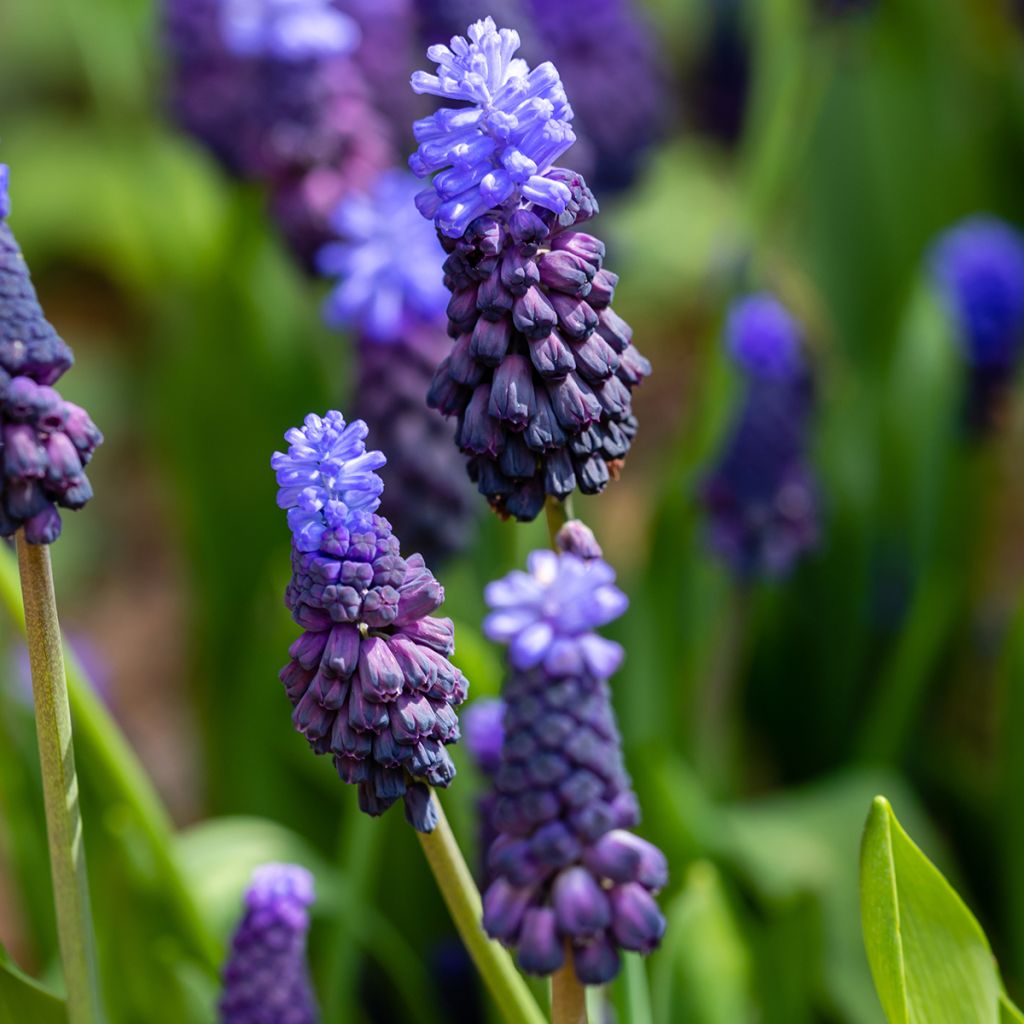

Muscari latifolium - Grape Hyacinth
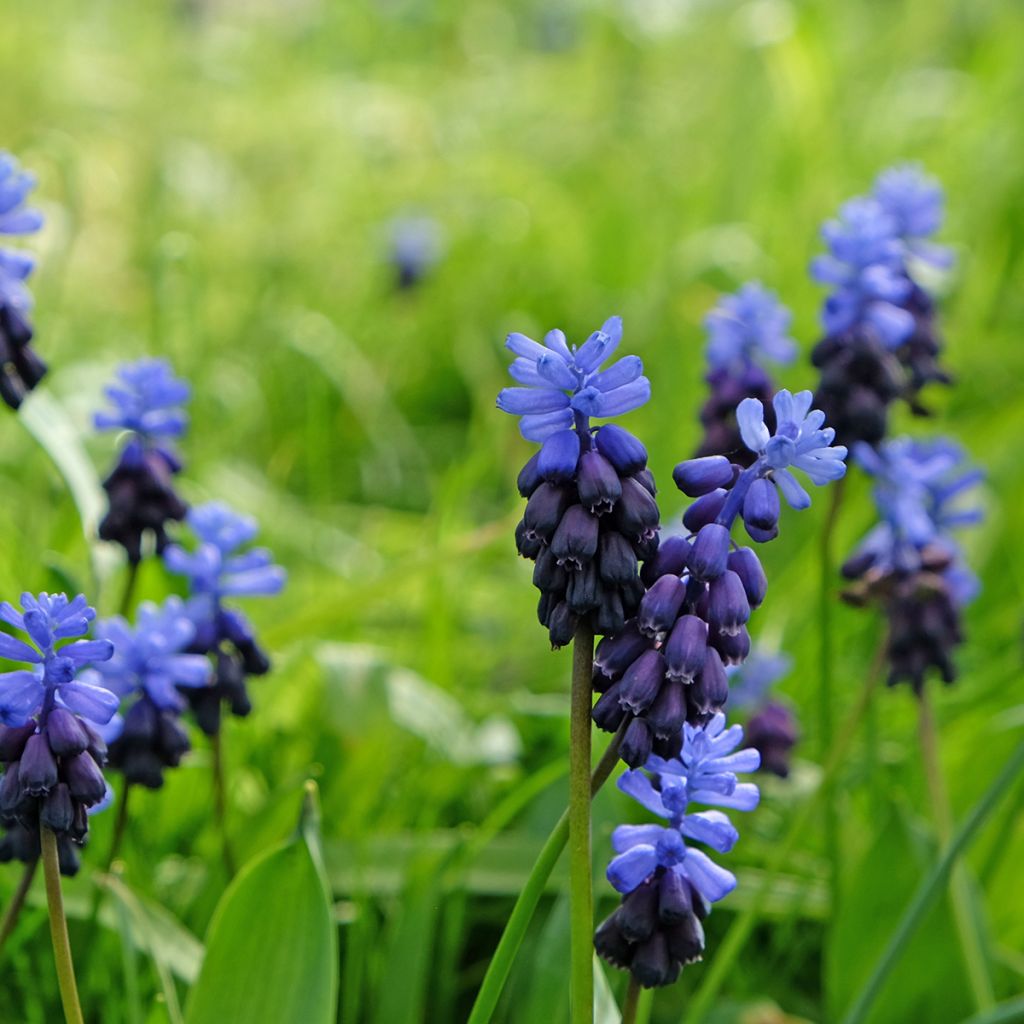

Muscari latifolium - Grape Hyacinth
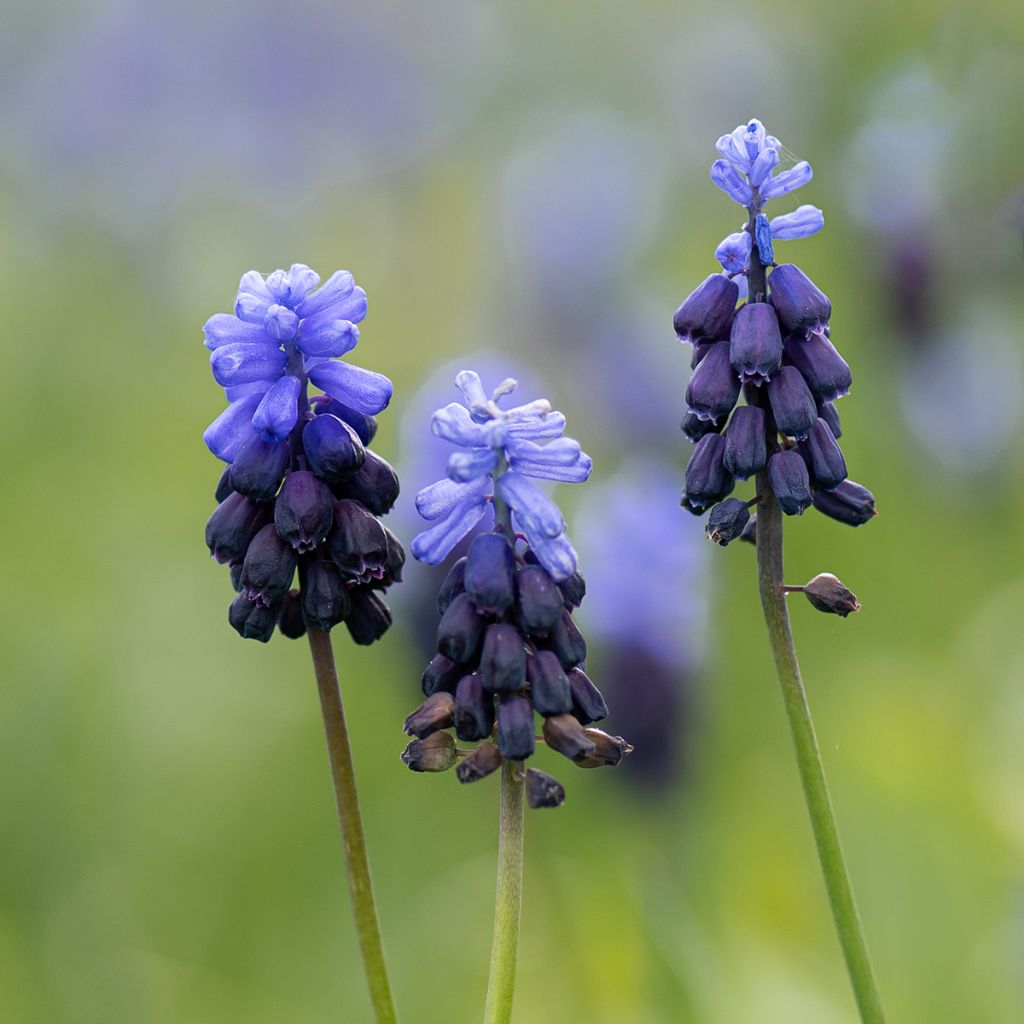

Muscari latifolium - Grape Hyacinth
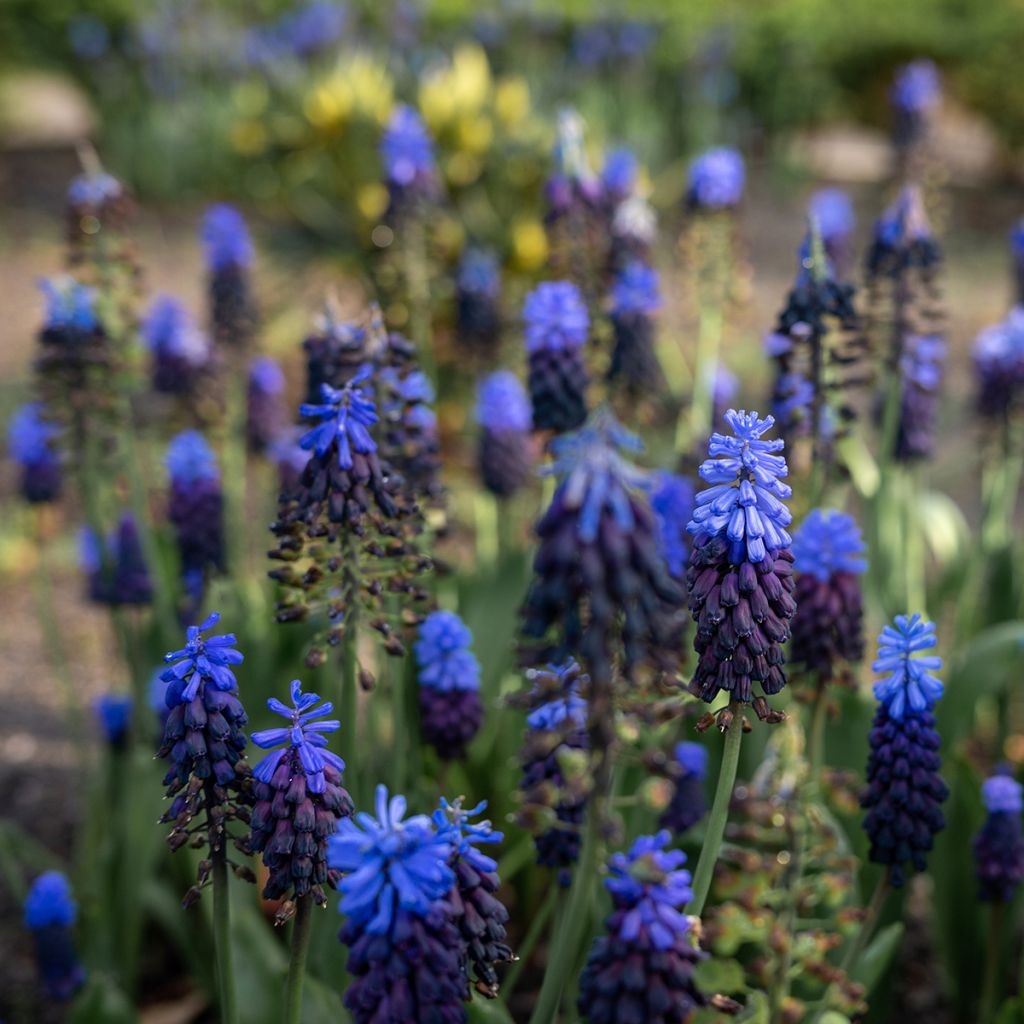

Muscari latifolium - Grape Hyacinth
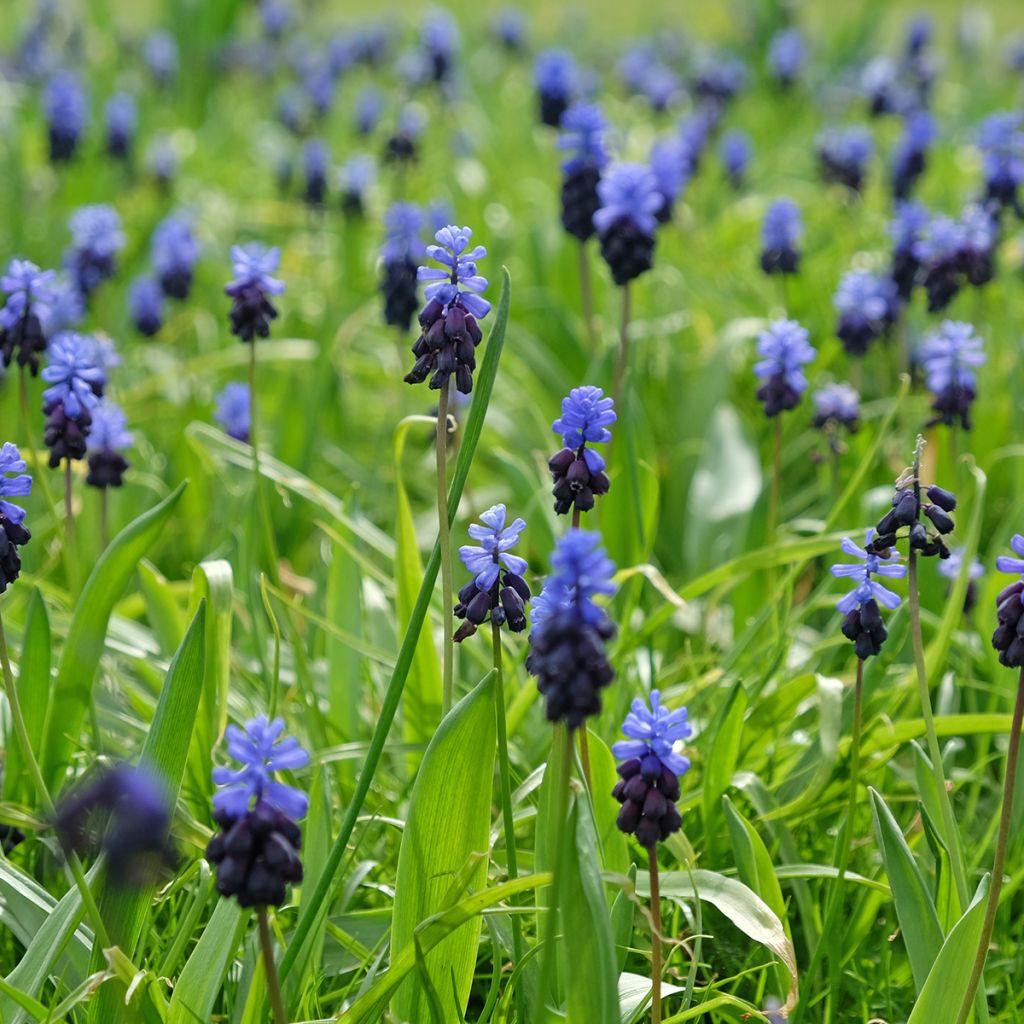

Muscari latifolium - Grape Hyacinth
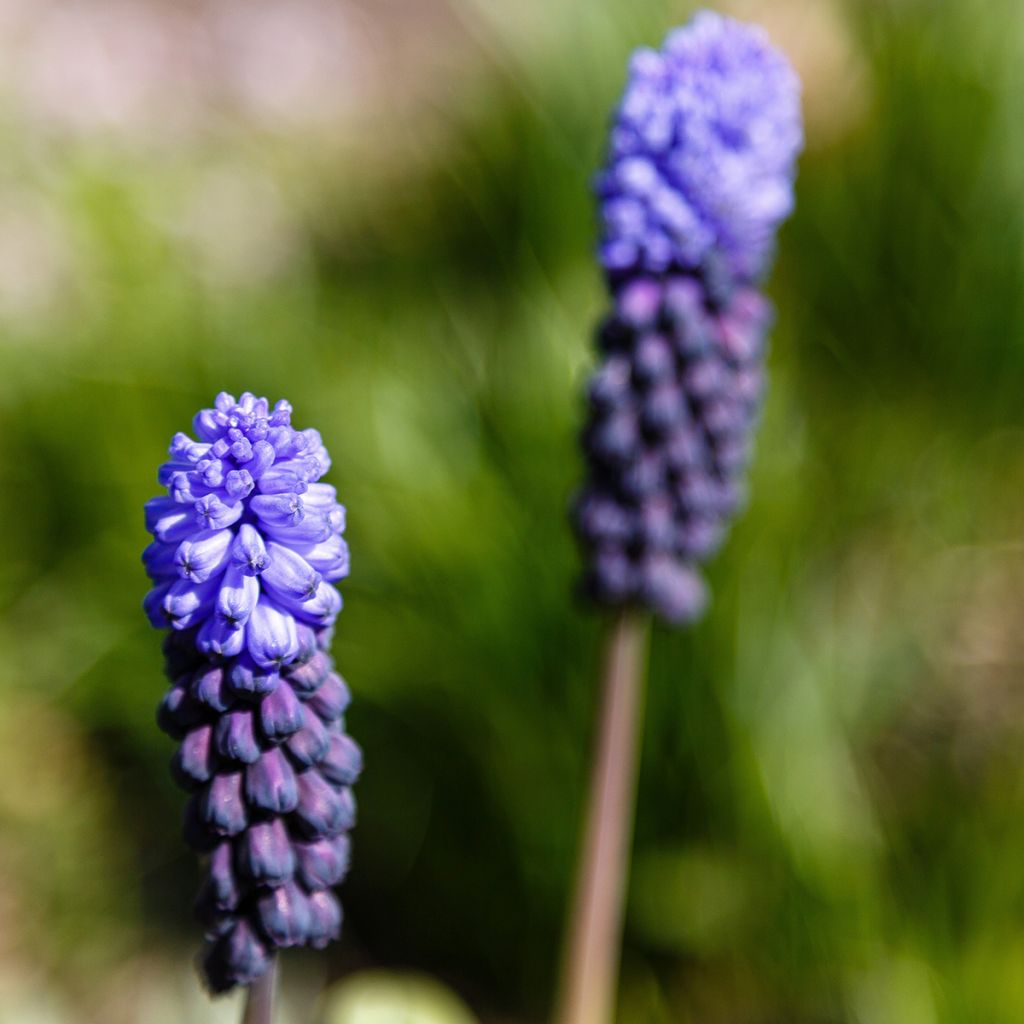

Muscari latifolium - Grape Hyacinth
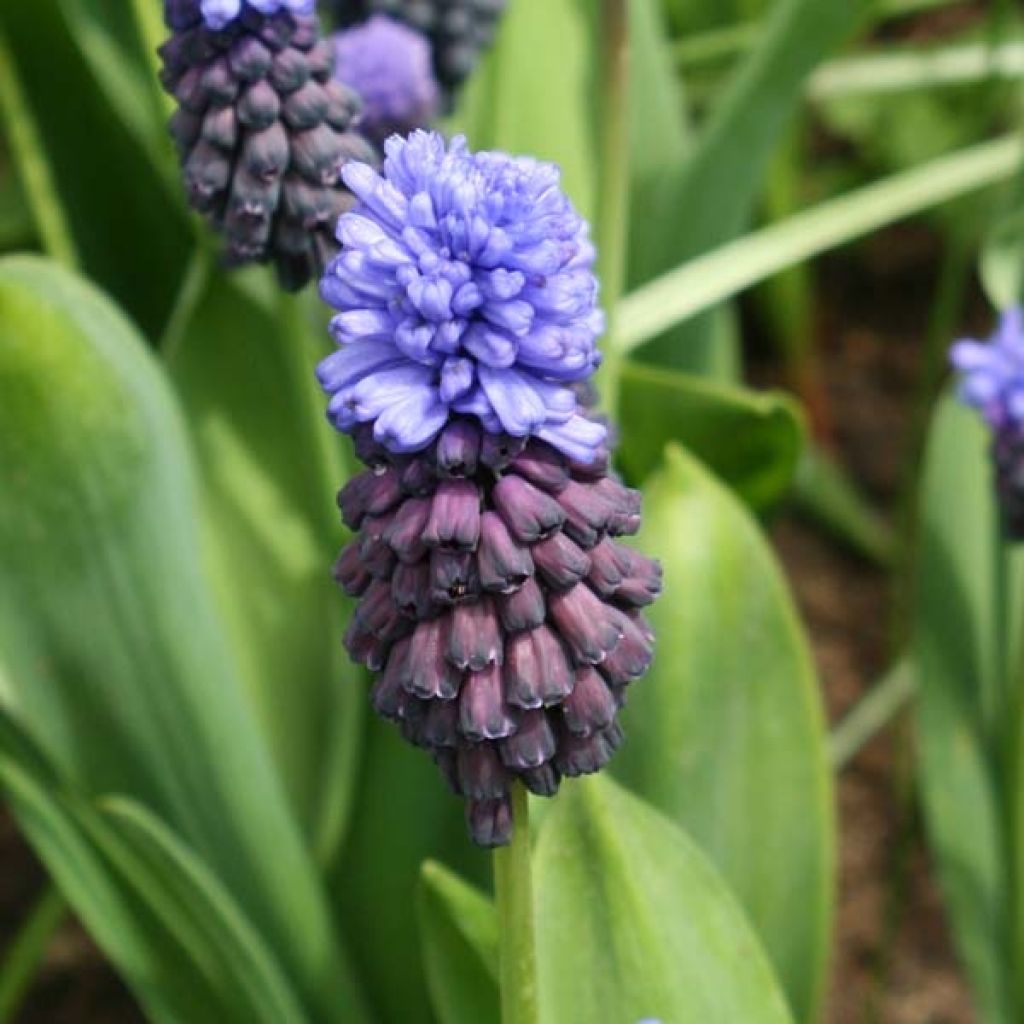

Muscari latifolium - Grape Hyacinth
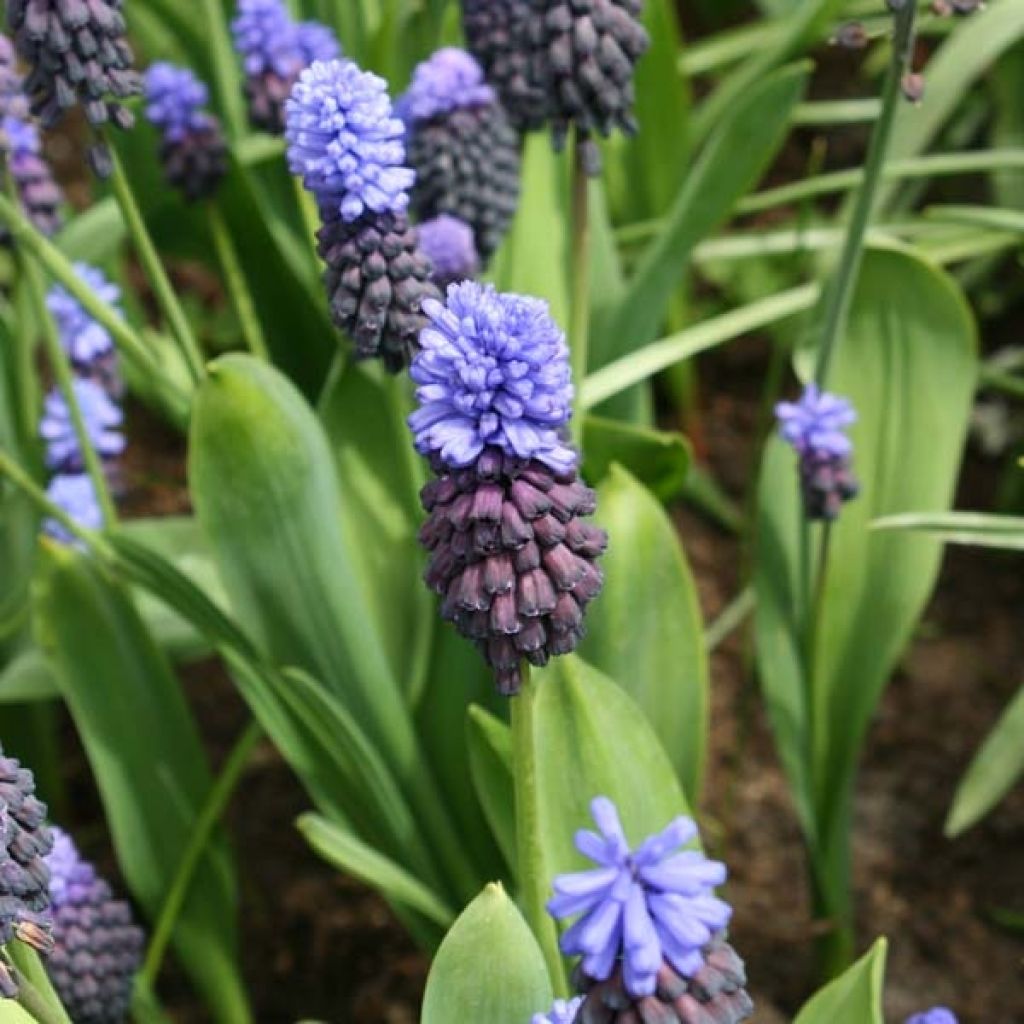

Muscari latifolium - Grape Hyacinth
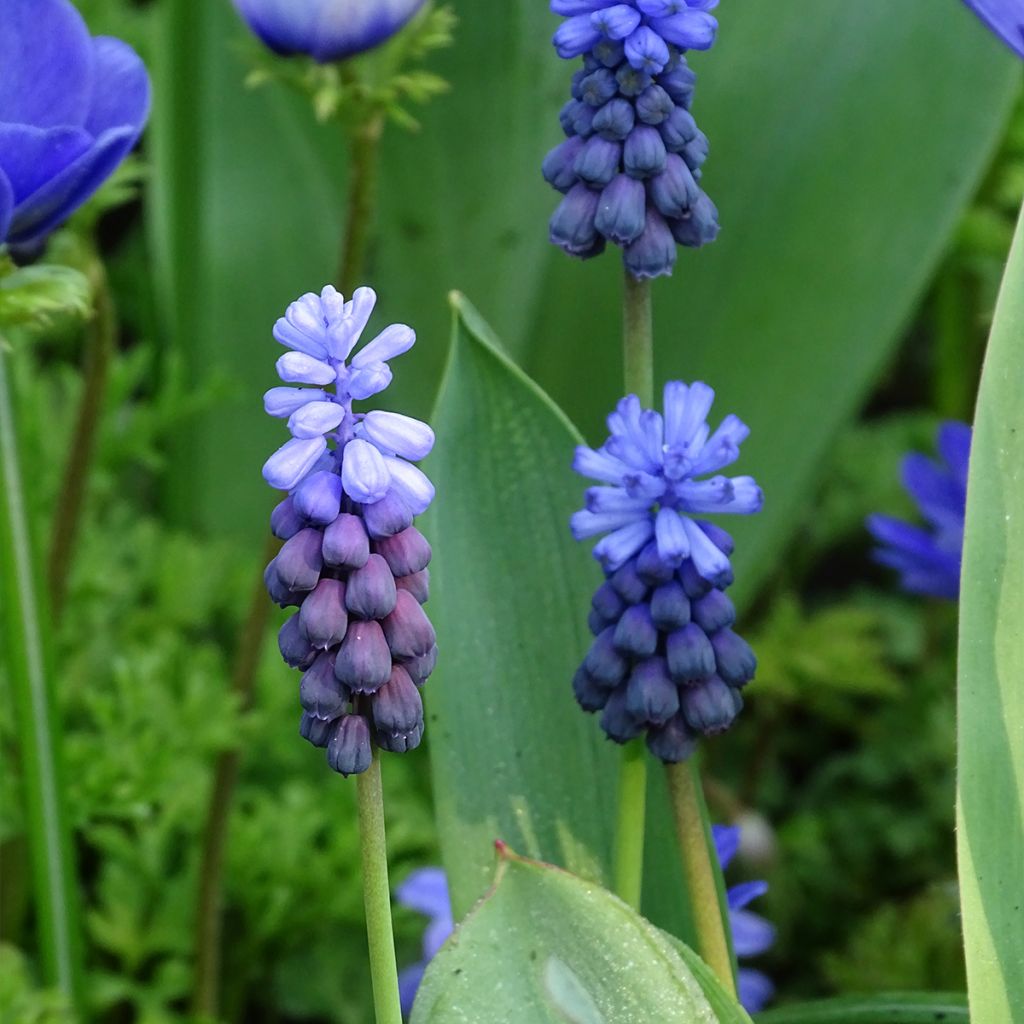

Muscari latifolium - Grape Hyacinth
Muscari latifolium - Grape Hyacinth
Muscari latifolium
Broad-leaved Grape Hyacinth
The foliage of this species is a completely unexpected complement, reminiscent of the mantle of greenery that adorns tulips, both contrasting, hardy and precious at the same time. The small purple-toned pompoms cheerfully pixelate the places where it is installed! Analyse et correction : The foliage of this species is a completely unexpected complement, reminiscent of the mantle of greenery that adorns tulips, both contrasting, hardy and precious at the same time. The small purple-toned pompoms cheerfully enliven the places where it is installed!
A n o u k . B, 11/05/2021
Special offer!
Receive a €20 voucher for any order over €90 (excluding delivery costs, credit notes, and plastic-free options)!
1- Add your favorite plants to your cart.
2- Once you have reached €90, confirm your order (you can even choose the delivery date!).
3- As soon as your order is shipped, you will receive an email containing your voucher code, valid for 3 months (90 days).
Your voucher is unique and can only be used once, for any order with a minimum value of €20, excluding delivery costs.
Can be combined with other current offers, non-divisible and non-refundable.
Why not try an alternative variety in stock?
View all →This plant carries a 6 months recovery warranty
More information
We guarantee the quality of our plants for a full growing cycle, and will replace at our expense any plant that fails to recover under normal climatic and planting conditions.


Does this plant fit my garden?
Set up your Plantfit profile →
Description
Muscari latifolium, also known as the Broad-leaved Grape Hyacinth, is an original, rather large species. It is a bulbous plant that produces narrow, conical, typically bicolored clusters, densely packed with dark purple-black tubular flowers topped with blue flowers. The foliage usually appears in autumn, in the form of a single broad and fleshy, chalky green leaf, and then disappears in summer. This plant prefers cool climates, partial shade, and well-drained, fertile soil, dry in summer.
Muscari latifolium is a bulbous plant in the hyacinth family native to the coniferous forests of the mountains in southern and western Turkey. It is often found growing on the edge of sparsely populated pine forests, on slightly acidic soil.
This plant is rather large for a muscari and can reach up to 40 cm (16in) high. Its vegetative cycle begins in September-October, when a single leaf appears (rarely two leaves are observed). Its broad, chalky green leaf is curled at the base and persists throughout winter. A single flower spike emerges in spring, April-May depending on the climate and weather. The inflorescence is a cluster of flowers 2 to 6 cm (1 to 2in) long and about 1.5 cm (1in) wide. The urn-shaped flowers are small, only 5 to 6 mm (0in) long and tightly packed together in a narrow, dense cone. The blue-violet almost black flowers are fertile and produce seeds after being pollinated by insects. The sterile flowers at the top of the spike are a very bright medium blue and their role is to attract pollinating insects. This bulb easily naturalises in light soil.
Plant Muscari latifolium in groups of about ten bulbs, in a flowering carpet or along a path to achieve a good decorative effect, or randomly naturalise them in a meadow and at the base of shrubs. Its flowers provide a beautiful range of blues, which will enhance all other spring bulbs. They pair well with daffodils and wood anemones, creating delicate scenes. Pink or white tulips are also good companions for their graceful flowers.
Muscari latifolium - Grape Hyacinth in pictures
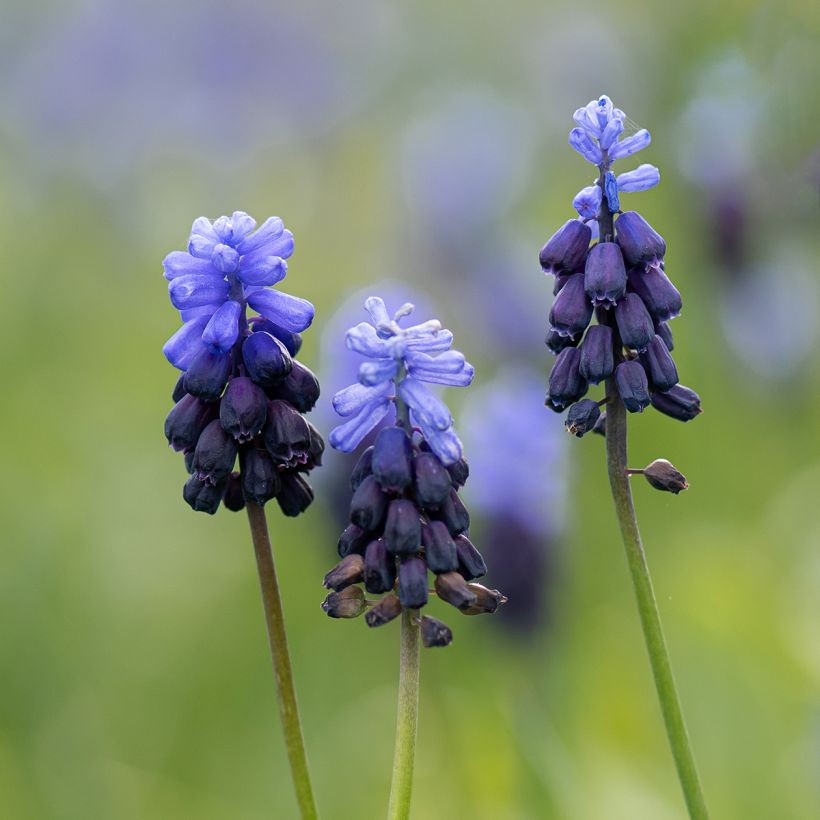

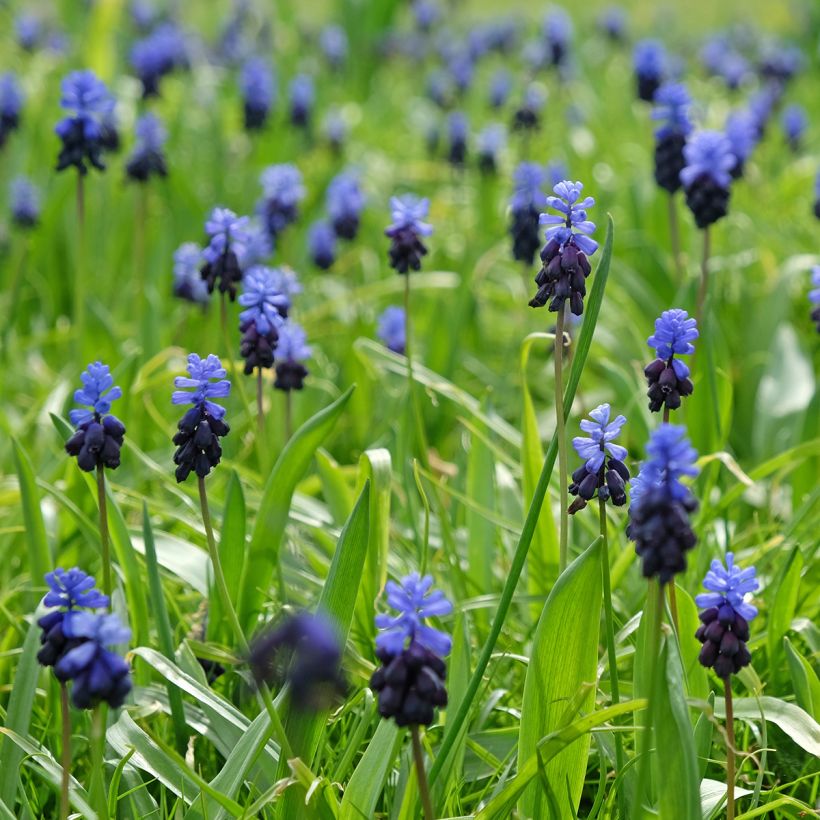

Plant habit
Flowering
Foliage
Botanical data
Muscari
latifolium
Hyacinthaceae
Broad-leaved Grape Hyacinth
Cultivar or hybrid
Other Muscari
View all →Planting and care
Plant your Muscari latifolium as soon as possible (in September) in well-drained, loose soil to ensure its hardiness. Drainage can be improved by adding fine gravel, either layered under the bulbs or mixed with the soil, if necessary. Plant at a depth of 10 cm (4in) (bulbs should be covered with approximately twice their height in soil). Space the bulbs 8 cm (3in) apart, or group them together in clusters (avoiding bulb-to-bulb contact). This Muscari tolerates dense shade under deciduous trees, or partial shade, but also likes a sunny exposure that is not scorching. It will thrive in fertile soil, but can also tolerate poor soil, where it will be shorter. Once in place, the bulbs will flower for many years if the soil is well-drained. After 2 years, you can divide the clumps and replant the bulbils from the originally planted bulbs. This will expand the covered area and increase the vigour of the flowers. Pot cultivation is possible: water abundantly in winter and autumn, then space out watering in summer to completely stop during dormancy.
Planting period
Intended location
Care
Planting & care advice
-
, onOrder confirmed
Reply from on Promesse de fleurs
Similar products
Haven't found what you were looking for?
Hardiness is the lowest winter temperature a plant can endure without suffering serious damage or even dying. However, hardiness is affected by location (a sheltered area, such as a patio), protection (winter cover) and soil type (hardiness is improved by well-drained soil).

Photo Sharing Terms & Conditions
In order to encourage gardeners to interact and share their experiences, Promesse de fleurs offers various media enabling content to be uploaded onto its Site - in particular via the ‘Photo sharing’ module.
The User agrees to refrain from:
- Posting any content that is illegal, prejudicial, insulting, racist, inciteful to hatred, revisionist, contrary to public decency, that infringes on privacy or on the privacy rights of third parties, in particular the publicity rights of persons and goods, intellectual property rights, or the right to privacy.
- Submitting content on behalf of a third party;
- Impersonate the identity of a third party and/or publish any personal information about a third party;
In general, the User undertakes to refrain from any unethical behaviour.
All Content (in particular text, comments, files, images, photos, videos, creative works, etc.), which may be subject to property or intellectual property rights, image or other private rights, shall remain the property of the User, subject to the limited rights granted by the terms of the licence granted by Promesse de fleurs as stated below. Users are at liberty to publish or not to publish such Content on the Site, notably via the ‘Photo Sharing’ facility, and accept that this Content shall be made public and freely accessible, notably on the Internet.
Users further acknowledge, undertake to have ,and guarantee that they hold all necessary rights and permissions to publish such material on the Site, in particular with regard to the legislation in force pertaining to any privacy, property, intellectual property, image, or contractual rights, or rights of any other nature. By publishing such Content on the Site, Users acknowledge accepting full liability as publishers of the Content within the meaning of the law, and grant Promesse de fleurs, free of charge, an inclusive, worldwide licence for the said Content for the entire duration of its publication, including all reproduction, representation, up/downloading, displaying, performing, transmission, and storage rights.
Users also grant permission for their name to be linked to the Content and accept that this link may not always be made available.
By engaging in posting material, Users consent to their Content becoming automatically accessible on the Internet, in particular on other sites and/or blogs and/or web pages of the Promesse de fleurs site, including in particular social pages and the Promesse de fleurs catalogue.
Users may secure the removal of entrusted content free of charge by issuing a simple request via our contact form.
The flowering period indicated on our website applies to countries and regions located in USDA zone 8 (France, the United Kingdom, Ireland, the Netherlands, etc.)
It will vary according to where you live:
- In zones 9 to 10 (Italy, Spain, Greece, etc.), flowering will occur about 2 to 4 weeks earlier.
- In zones 6 to 7 (Germany, Poland, Slovenia, and lower mountainous regions), flowering will be delayed by 2 to 3 weeks.
- In zone 5 (Central Europe, Scandinavia), blooming will be delayed by 3 to 5 weeks.
In temperate climates, pruning of spring-flowering shrubs (forsythia, spireas, etc.) should be done just after flowering.
Pruning of summer-flowering shrubs (Indian Lilac, Perovskia, etc.) can be done in winter or spring.
In cold regions as well as with frost-sensitive plants, avoid pruning too early when severe frosts may still occur.
The planting period indicated on our website applies to countries and regions located in USDA zone 8 (France, United Kingdom, Ireland, Netherlands).
It will vary according to where you live:
- In Mediterranean zones (Marseille, Madrid, Milan, etc.), autumn and winter are the best planting periods.
- In continental zones (Strasbourg, Munich, Vienna, etc.), delay planting by 2 to 3 weeks in spring and bring it forward by 2 to 4 weeks in autumn.
- In mountainous regions (the Alps, Pyrenees, Carpathians, etc.), it is best to plant in late spring (May-June) or late summer (August-September).
The harvesting period indicated on our website applies to countries and regions in USDA zone 8 (France, England, Ireland, the Netherlands).
In colder areas (Scandinavia, Poland, Austria...) fruit and vegetable harvests are likely to be delayed by 3-4 weeks.
In warmer areas (Italy, Spain, Greece, etc.), harvesting will probably take place earlier, depending on weather conditions.
The sowing periods indicated on our website apply to countries and regions within USDA Zone 8 (France, UK, Ireland, Netherlands).
In colder areas (Scandinavia, Poland, Austria...), delay any outdoor sowing by 3-4 weeks, or sow under glass.
In warmer climes (Italy, Spain, Greece, etc.), bring outdoor sowing forward by a few weeks.






























